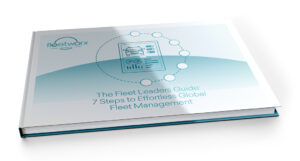07 May Choosing the Right Fleet Supplier Model – Why One Size Never Fits All
Once you’ve defined your fleet strategy and selected a management partner to guide implementation, the next critical step is choosing the right supplier model.
It may sound like a tactical decision—but it’s a strategic choice that has a lasting impact on cost, control, and performance. Select the wrong model, and you could face supplier inconsistency, missed savings, or operational friction. Choose the right one, and you create a platform for efficiency, scalability, and long-term success.
Let’s explore what supplier models exist, how to evaluate them, and how to select the one that fits your business best.
Why Supplier Model Selection Matters
Too often, organisations approach supplier selection with a “like-for-like replacement” mindset. They look at current providers, costs, or contract end dates, and base decisions on convenience or familiarity. But choosing the right model should be based on a clear understanding of your fleet dynamics, commercial goals, and internal structure.
The supplier model is the framework through which all your fleet interactions flow—from procurement and pricing to service and support. It’s not just about who supplies the vehicles—it’s about how they’re managed, coordinated, and measured.
The Three Core Supplier Models
While no two fleets are exactly alike, most organisations adopt one of three common supplier models:
- Global Supplier Model
In this approach, you appoint a single supplier (or a small, centrally coordinated group) to manage your fleet across all markets.
Best suited for:
- Centralised organisations with standardised policies
- Businesses operating in mature, well-supported markets
- Organisations prioritising scale and simplification
Pros:
✅ Simplifies supplier management
✅ Easier to standardise policies and reporting
✅ Potential for global pricing leverage
Cons:
🚫 Risk of local service gaps or inflexibility
🚫 Over-reliance on a single partner
🚫 May not suit regional preferences or regulations
- Regional Supplier Model
This model involves selecting preferred suppliers by region (e.g., Europe, North America, APAC), providing more flexibility while retaining some level of central control.
Best suited for:
- Organisations with strong regional structures
- Businesses operating in diverse regulatory or market environments
- Fleets requiring a balance of control and localisation
Pros:
✅ Flexibility to match local market needs
✅ Easier to compare performance between suppliers
✅ Stronger relationships at regional level
Cons:
🚫 More complex to manage
🚫 Potential duplication of effort
🚫 Harder to enforce consistency
- Local/Decentralised Supplier Model
Here, each country or business unit selects and manages its own supplier relationships independently.
Best suited for:
- Highly decentralised organisations
- Businesses with significant variation in local needs
- Markets with limited supplier availability
Pros:
✅ High local autonomy and responsiveness
✅ Suppliers chosen for specific market fit
✅ Often better service quality at local level
Cons:
🚫 No economies of scale
🚫 Poor visibility across the fleet
🚫 Increased admin and inconsistent policies
How to Choose the Right Model for Your Business
There’s no universal “best” model—it depends entirely on your unique business goals, footprint, and internal setup. Here’s how to evaluate what’s right for you:
- Map Your Operational Dynamics
- How many vehicles are in each market?
- Which regions have the most complexity?
- Do certain markets have regulatory, tax, or cultural differences that impact supplier choice?
The size, structure, and variability of your fleet will shape the level of central control you can realistically implement.
- Define Your Priorities
What does success look like for your fleet? Are you aiming for:
- Cost reduction? A global model might offer stronger pricing power.
- Operational agility? A regional or local model may be more responsive.
- Control and visibility? Centralised models offer easier governance.
- Sustainability or electrification? Certain suppliers may lead in specific regions.
Having clarity on goals helps you weigh the trade-offs of each model.
- Assess Supplier Capabilities
Even if your ideal model is global, not every supplier can deliver global service to your standards. Evaluate:
- Regional presence and coverage
- Breadth of service offering
- Track record in compliance and reporting
- Digital tools and data capabilities
The model is only as strong as the suppliers that support it.
The Role of Your Fleet Management Partner
As discussed in this blog, your fleet management partner plays a crucial role in evaluating and selecting the right supplier model.
They bring:
- Experience with similar clients and industries
- Benchmarking data to support your decision
- Tools for comparing costs and complexity across scenarios
- Structured RFP support for supplier selection
- Ongoing governance to ensure the model performs
Without a partner, many businesses default to what feels easiest, rather than what delivers the best long-term value.
What Happens If You Get It Wrong?
Choosing the wrong model can lead to:
- Supplier mismatch and friction
- Loss of control over key markets
- Inconsistent service and compliance risks
- Escalating costs due to fragmented contracts
- Difficulty scaling or adapting as your fleet evolves
The supplier model isn’t something to “fix later”—it’s a core part of the foundation for effective fleet management.
Fleetworx: Helping You Choose Smarter
At Fleetworx, we help fleet leaders design supplier models that reflect their unique business realities. We assess your structure, map your markets, analyse your costs, and guide you through the supplier evaluation and selection process.
Our goal isn’t to offer a one-size-fits-all answer—it’s to help you build a supplier model that delivers the right combination of control, efficiency, and flexibility for your business.
Final Thought: The Model Is the Map
If your fleet strategy is the destination, your supplier model is the route you take to get there. Choose it carefully, design it deliberately, and support it with the right governance—and it will serve you for years to come.
Download the full guide
7 Steps to Effortless Fleet Management

Or speak to our team to explore the supplier model that best fits your future.
Back to Blogs Back to Case Studies List

Sorry, the comment form is closed at this time.